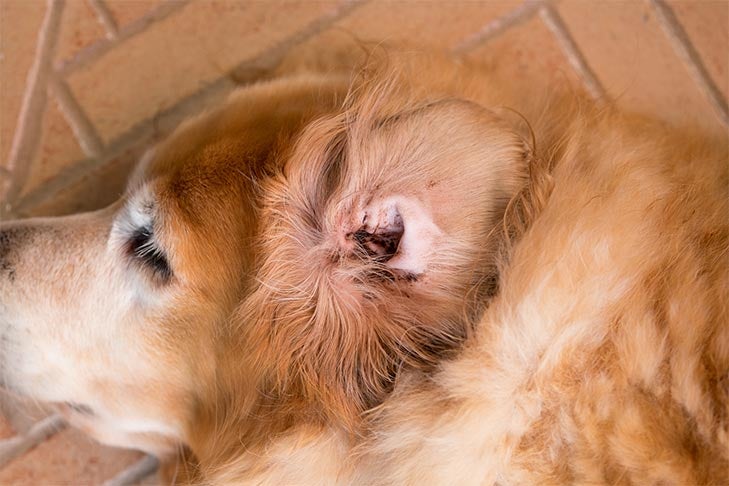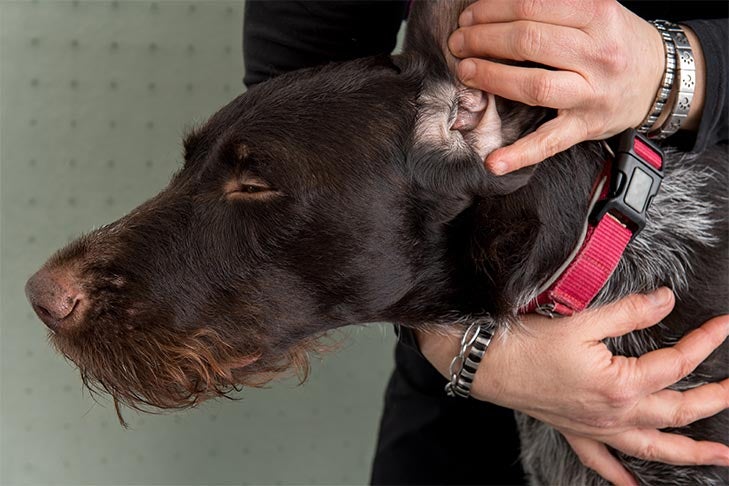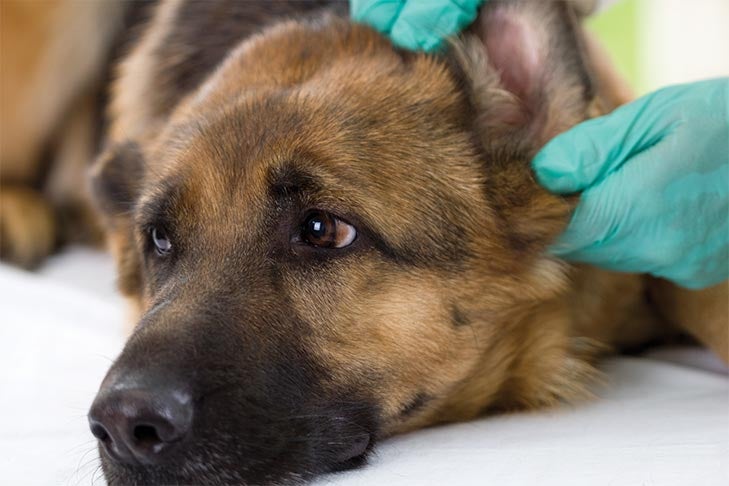How To Clean Dog's Inner Ear
As pet owners, we know that keeping our dogs' ears clean is an important part of their care. But cleaning those ears can challenging if our dogs aren't conditioned to accept ear cleaning, or we don't feel comfortable doing it.
Some dogs naturally have healthy, clean ears and may almost never need to have their ears cleaned, while other dogs require regular ear cleaning to prevent the buildup of dirt that can lead to ear infections. Dog breeds with long hanging ears, such as Basset Hounds and Cocker Spaniels, are among those with the highest risk of getting ear infections, but all breeds can develop them.
Checking the health of your dog's ears is something you should be doing on a regular basis. Your dog might enjoy having his ears rubbed when they are healthy, but if he pulls away from you they may be sore. So you can begin to assess their condition by gently massaging your dog's ears.
How to Tell When a Dog's Ears Need Cleaning
Before you break out the dog ear cleaner, check to make sure your dog actually needs ear cleaning. Over-cleaning your dog's ears can lead to infection and irritation, so familiarize yourself with what a healthy, clean ear looks like (pink, odorless, and not dirty or inflamed) and smells like (not yeasty or stinky), and clean it only when you notice a change.
Some dogs require infrequent ear cleanings, while others, such as those predisposed to ear infections or dogs who spend a lot of time in the water, may need them often. The Merck Veterinary Manual recommends that the ear canals be kept dry and well ventilated by using topical astringents in dogs that swim frequently and by preventing water from entering the ear canals during bathing.
If you notice a mild odor or see that your dog is shaking his head more than usual, it is probably time for a cleaning. And if your dog's ear looks red and inflamed, smells yeasty, or he appears to be in pain, contact your veterinarian. These symptoms could indicate an ear infection, fleas, or ear mites, or allergies, and require medical attention. Cleaning an infected ear often causes more harm than good.

Ear-Cleaning Supplies
You only need a few supplies to successfully clean your dog's ears: a cotton ball or gauze, dog ear-cleaning solution, and a towel. Avoid using cotton-tipped swabs (Q-tips) or anything with a pointed tip. These tools can shove dirt and debris deeper into your dog's ears, causing infections, and can even lead to trauma to the inner structures of the ear itself.
A note to the wise: Ear cleaning, while simple, can get messy. You may want to clean your dog's ears in a bathroom or a room that is easy to clean in case your dog shakes his head vigorously during the process.
Dog Ear-Cleaning Solutions
The internet is full of homemade ear-cleaning solutions for dogs. However, veterinarian-approved ear-cleaning solutions are the safest choice. Some homemade ear-cleaning solutions contain harmful or irritating ingredients. Others simply don't do a good job.
Most veterinary offices carry ear cleaner for dogs. You can also ask your veterinarian what product they recommend for your dog, as some solutions may be more beneficial for your pup's specific needs than others.

How to Clean Dog Ears in 3 Easy Steps
- Assemble your supplies and your dog. Try to clean your dog's ears when he is calm, as this will help make the process easier. Don't be afraid to use treats to sweeten the deal.
- Squeeze a veterinarian-approved ear-cleaning solution to fill your dog's ear canal and massage gently at the base of the ear for about 30 seconds. You will hear a squishing sound as the product dislodges debris and buildup. Don't let the tip of the applicator touch your dog's ear, as this can introduce bacteria.
- Let your dog shake his head. This is where the towel comes in — you can use it to protect yourself from spray and wipe down his face. Once your dog has finished shaking, take the cotton ball or gauze and gently wipe out the ear canal, going no deeper than the depth of one knuckle. If your dog appears to be in pain during the cleaning process, stop and consult your veterinarian.
Should You Use Hydrogen Peroxide to Clean Dog Ears?
No. Don't use hydrogen peroxide on your pup. This common household product can actually cause irritation to healthy skin cells. Ears contain very sensitive tissue, and extended use of hydrogen peroxide could eventually lead to damage of the ear itself. Stick to veterinarian-approved cleaners.

How to Clean Dog Ears: A Summary
Now that you know how to clean dog ears, here are the basics one more time:
- Know what a healthy, clean ear looks and smells like.
- Check your dog's ears regularly after bathtime.
- Cleaning ears too often can cause excessive irritation
- Use a veterinarian-approved ear-cleaning solution for dogs.
- Contact your veterinarian if you suspect your dog has an ear infection.
Taking care of your dog's ears helps prevent infections. Regular ear examinations will also catch any other problems, such as ear mites, before they get worse, and will desensitize your dog to ear handling.
AKC is a participant in affiliate advertising programs designed to provide a means for sites to earn advertising fees by advertising and linking to akc.org. If you purchase a product through this article, we may receive a portion of the sale.
How To Clean Dog's Inner Ear
Source: https://www.akc.org/expert-advice/health/how-to-clean-dogs-ears/
Posted by: coledisme1997.blogspot.com

0 Response to "How To Clean Dog's Inner Ear"
Post a Comment